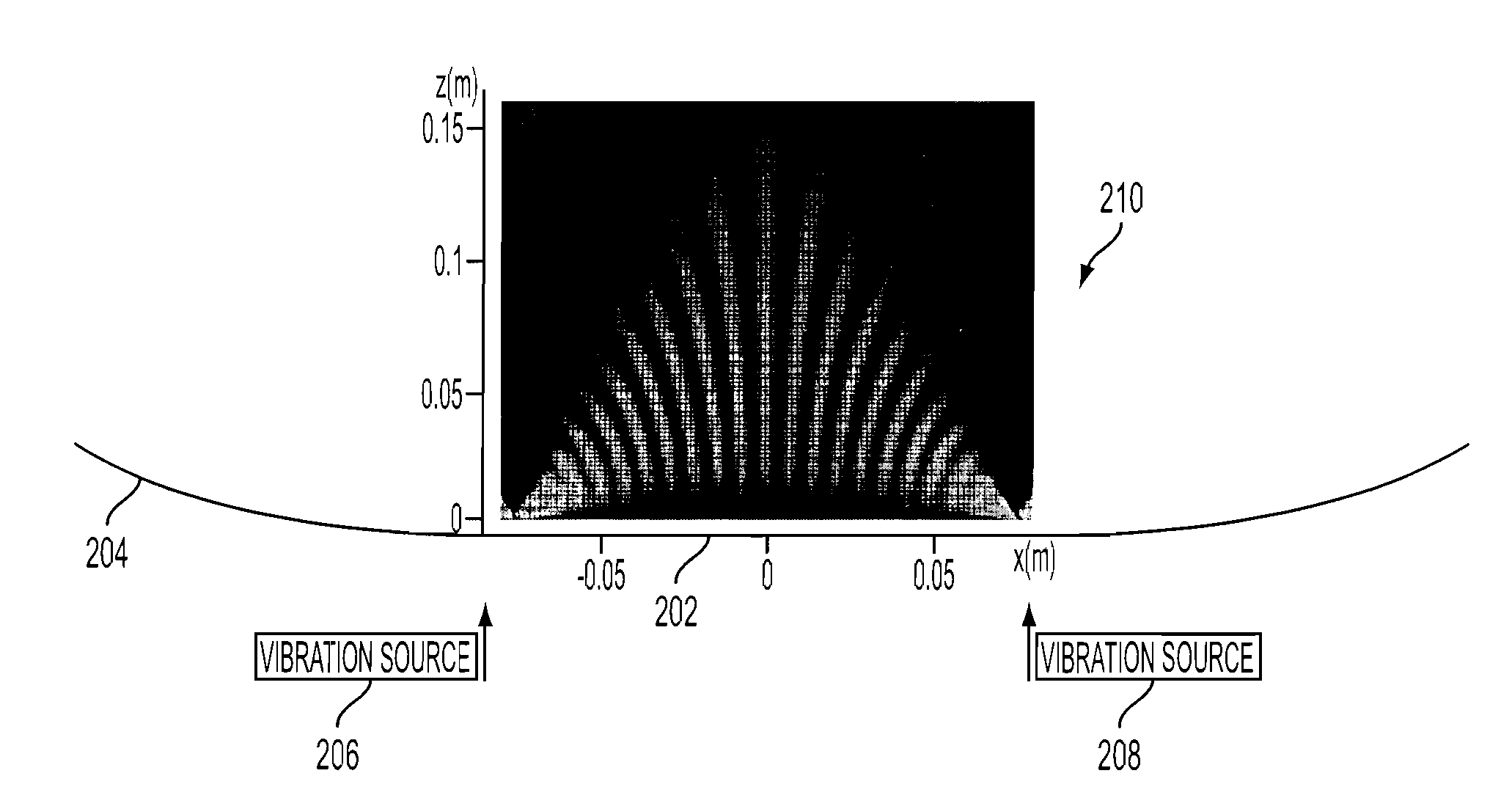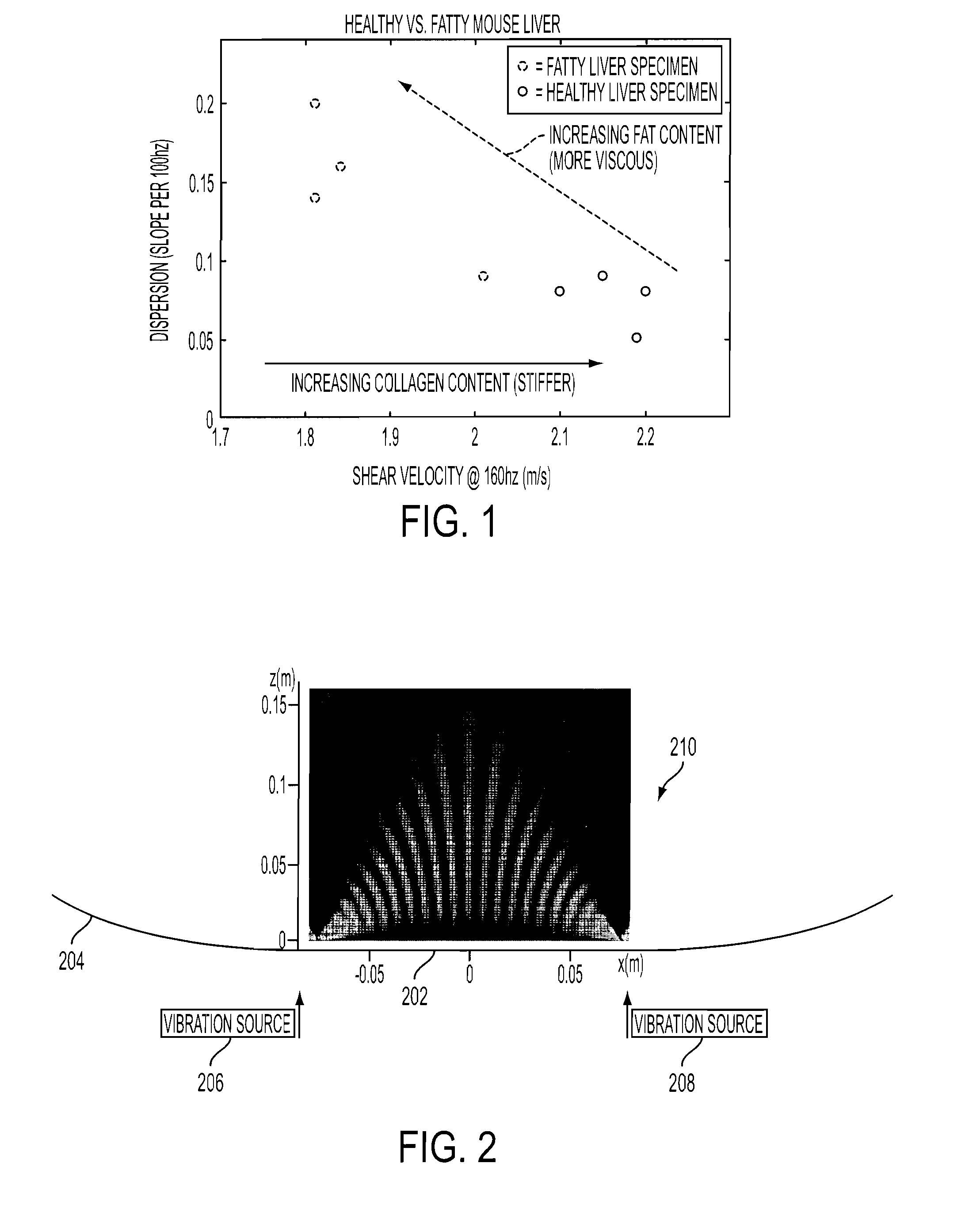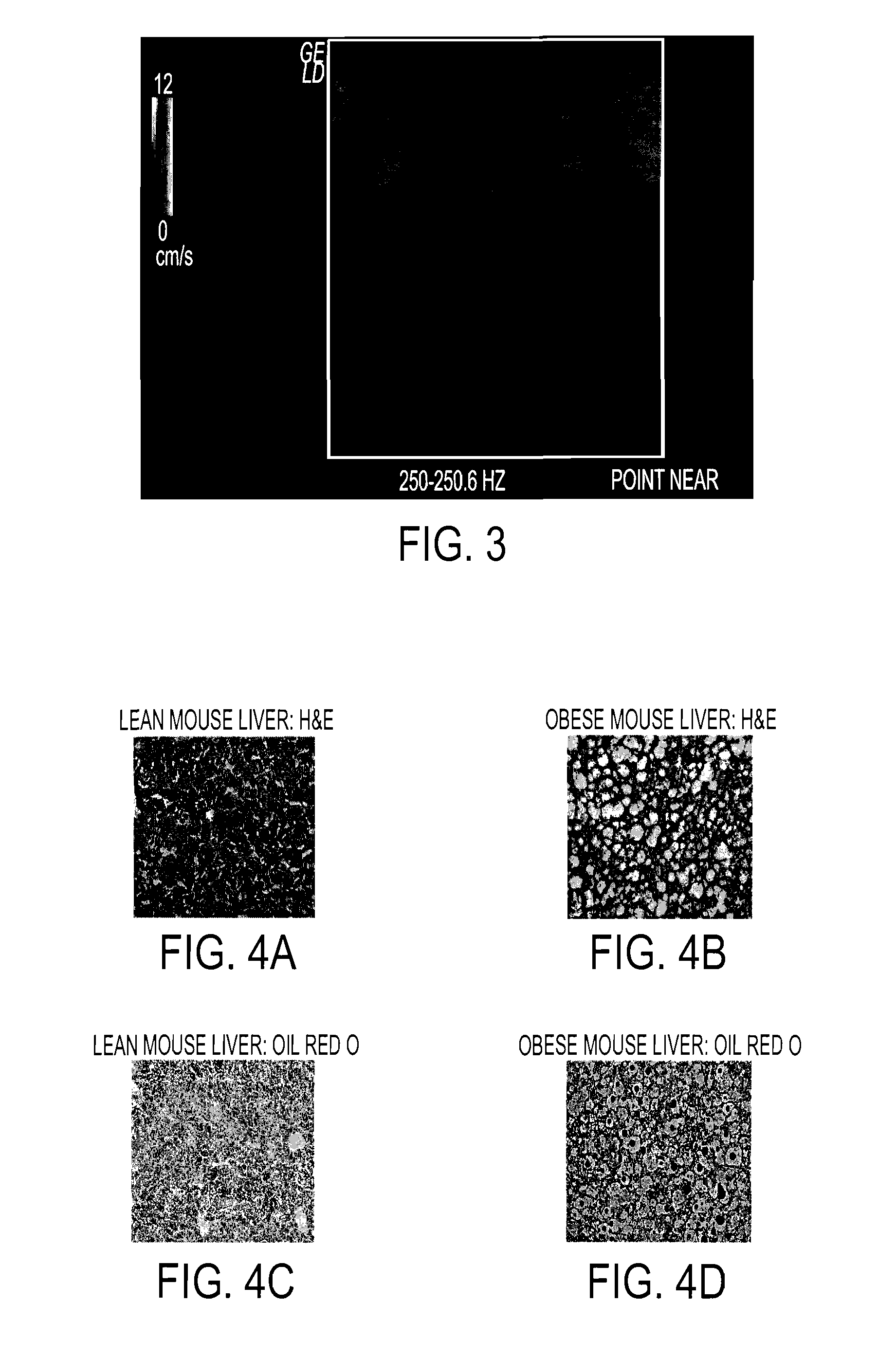Non-invasive assessment of liver fat by crawling wave dispersion
a crawling wave and liver fat technology, applied in the field of liver fat assessment, can solve the problems of low risk of bleeding post-operation, inability to biopsy logistically, and large amount of tissue obtained
- Summary
- Abstract
- Description
- Claims
- Application Information
AI Technical Summary
Benefits of technology
Problems solved by technology
Method used
Image
Examples
Embodiment Construction
[0023]A preferred embodiment of the present invention will be set forth in detail with respect to the drawings, in which like reference numerals refer to like elements throughout.
[0024]The preferred embodiment builds on the principles of elastography to include measurements of dispersion (the frequency dependence of shear waves), which indicates viscosity within the liver. By applying crawling waves to the liver over a range of shear wave frequencies between 80-300 Hz, the resulting dispersion measurements (change over frequency) enable the user to separate out the distinct effects of fibrosis (increased stiffness with little dispersion) and fat (softer and more viscous with more dispersion). FIG. 1 illustrates that separation.
[0025]The concept of crawling waves was introduced into the elastography field in 2004. Two shear wave sources are placed on the two opposite sides of a sample, driven by sinusoidal signals with slightly offset frequencies. The shear waves from the two sources...
PUM
 Login to View More
Login to View More Abstract
Description
Claims
Application Information
 Login to View More
Login to View More - R&D
- Intellectual Property
- Life Sciences
- Materials
- Tech Scout
- Unparalleled Data Quality
- Higher Quality Content
- 60% Fewer Hallucinations
Browse by: Latest US Patents, China's latest patents, Technical Efficacy Thesaurus, Application Domain, Technology Topic, Popular Technical Reports.
© 2025 PatSnap. All rights reserved.Legal|Privacy policy|Modern Slavery Act Transparency Statement|Sitemap|About US| Contact US: help@patsnap.com



